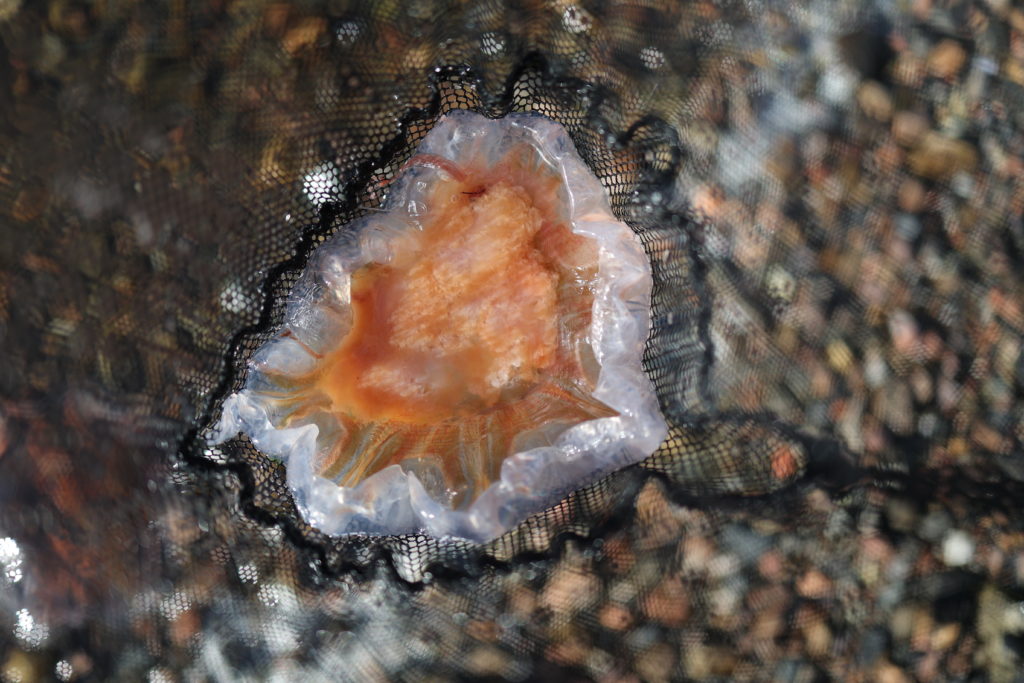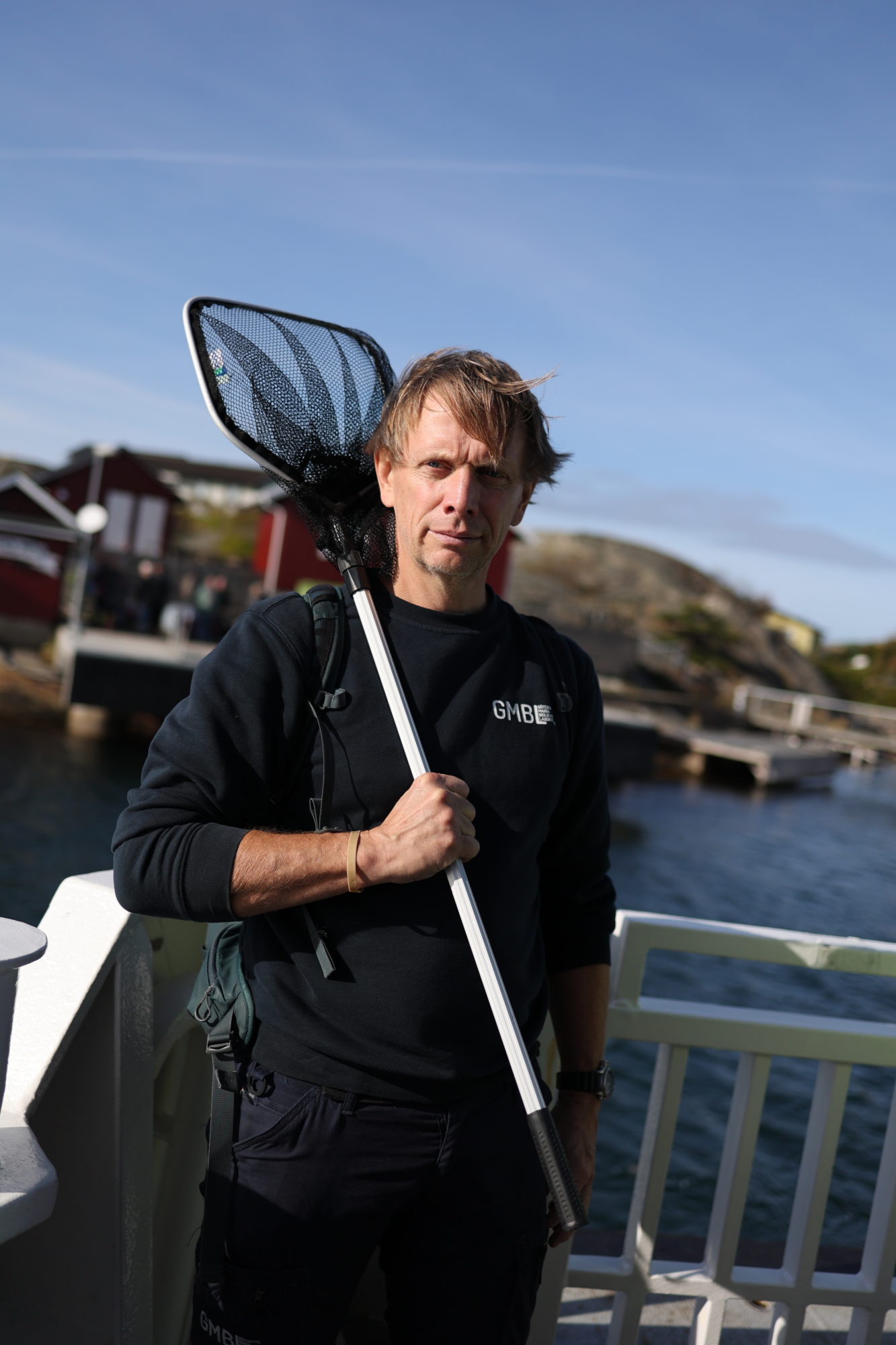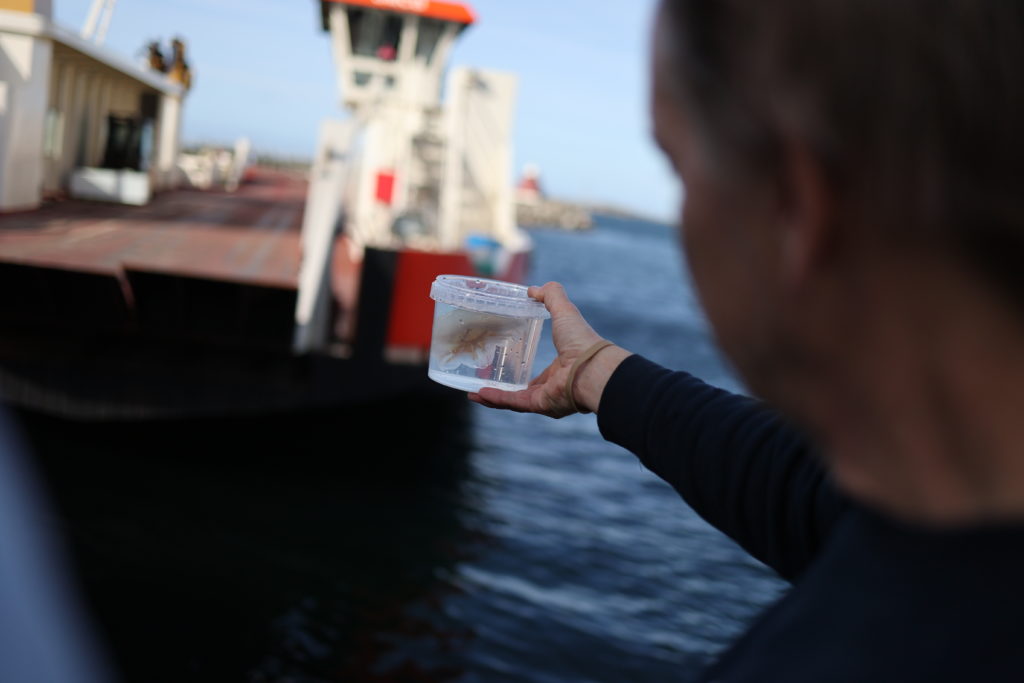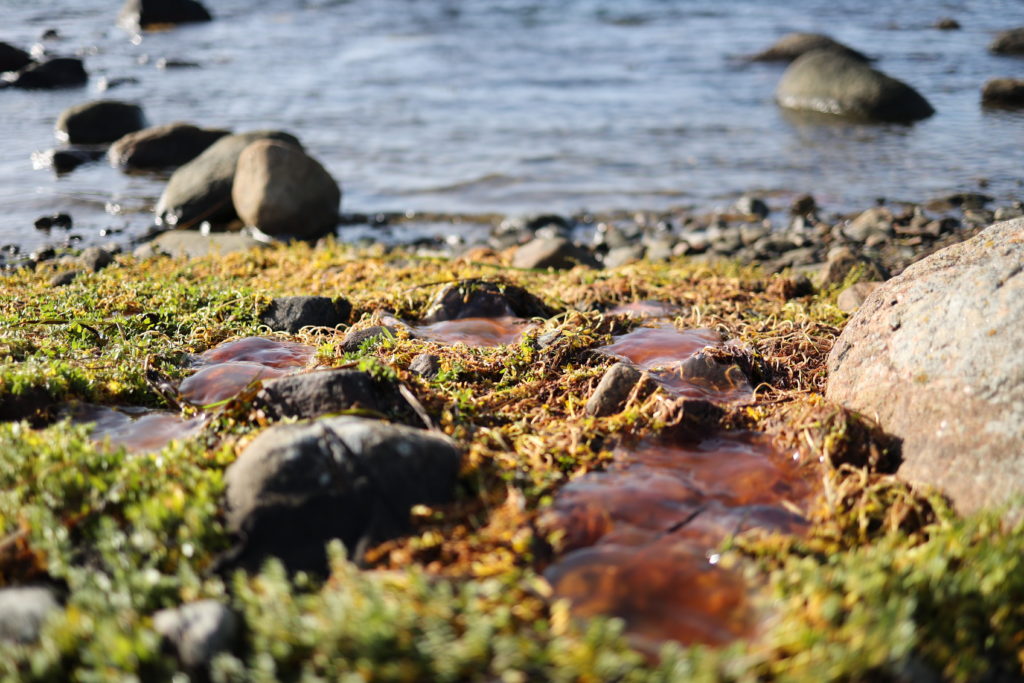Sandra Daniel, Mireia Jimenez Barcelo, Javad Maleki, Marina Panicheva, Peter Seenan

A global increase in jellyfish precipitated by climate change is impacting communities in the Gothenburg archipelago, with local restaurants and fishing reporting the effects.
Jellyfish numbers are rising globally because of climate change factors and anthropogenic impacts on the marine environment, our investigation finds, with the worrying trend set to continue.
Researchers report an increase in comb jellies in Swedish waters along with the 2018 arrival of an “alien species” called the clinging jellyfish, which delivers a painful sting. But they warn there is not enough research to understand the full extent of their impact and further consequences at a local level.

To uncover the extent of the increased amount of jellyfish in the local environment, we headed to Vrångö island with Björn Källström, a marine biologist at the University of Gothenburg. We didn’t have to search high and low: jellyfish were visible both in the water and on land.
Our team captured the American comb jellyfish; an invasive species that appeared because of human activity. Källström comments: “This is an invasive alien species, which arrived in Swedish waters in 2006. In summer, people in Sweden report thousands of them”.
Aside from reducing the amount of fish in the sea, jellyfish clog nets. Andreas Olsson Wijk, a local fisherman, says: “When fishing mackerel, we can’t catch anything, they fill the net and it’s impossible to get anything into the boat”.
According to Håkan Karlsten, a local hotel owner who has lived on the island permanently since 1991: “Small fishing boats have problems because they are not strong enough to take anything. They don’t have tools to take them out, and strong motors to counteract the weight of the jellyfish in the nets”.

Professor Lena Granhag, lecturer of Maritime Studies in Chalmers University, helped us understand the causes of this increase. She said the warming of sea waters, caused by climate change, leads to the presence of the American comb jellyfish in Sweden and the Baltic sea. Excessive levels of nutrients in the water, called eutrophication, also contribute to the increase of the jellyfish population. The main nutrients involved in this process are nitrogen and phosphorus, which can be found in farming pesticides and fertilisers. “More nutrients will lead to more blooms”, she said, “When there are lots of nutrients, algae will bloom. Jellyfish can eat the algae directly, but they actually capture zooplankton – or small shrimp – that in turn have algae on them.”, Granhag said.
In our interview with Källström, he explained how direct human action is also relevant. Ships can be responsible for introducing other invasive species, like the clinging jellyfish, which “came in 2018 with a big cargo ship to Swedish waters and managed to survive”, he said. Overfishing is also “a factor leading to more jellyfish”, Källström added, since fish are one of their main predators.
International media outlets show how increasing jellyfish are a global trend. Along the coast of Haifa in Israel, jellyfish cause a lot of damage every year, with this increasing in the last few years. The Society of Ecology and Environmental Sciences in Israel points to climate change. Overfishing is also disturbing the ecosystem through competition for food and space, they add. When the ecosystem is altered, the marine environment inevitably changes too and vice-versa. Israel’s farming sector also impacts the marine environment with runoff of pesticides and fertilisers. As we have seen, this leads to jellyfish blooms caused by high levels of phosphorus and nitrogen.
They can also pose practical challenges, such as clogging the cooling water streams of nuclear power plants. Oskarshamn nuclear power plant reactors one and three were both clogged in 2005 respectively 2013, this happens regularly in Japan’s nuclear power plants during the summer in a tsunami-stressed energy sector. Nuclear power plants in Scotland face a similar challenge.


“The problem in Sweden and in many other places is that we don’t have any long-time series of measurements of monitoring jellyfish. It’s actually quite difficult to say for any place in Sweden or many places in the world that jellyfish are in fact increasing. However, there are several signs of increase.” said Källström. Granhag agrees with Källström’s position about the lack of data, adding “When it is connected to the commercial interest, then they investigate.”
A deeper understanding for the increase of jellyfish and their link with climate change depends on greater economic investment in the collection of data and marine research. Initiatives on crowd-sourced data, such as the reports by the Swedish Agency for Marine and Water Management, are one solution to the lack of research about jellyfish numbers and its relation to climate change. “This is citizen science, people are helping scientists,” Källström says.
Global trends show the impact of jellyfish goes beyond stung tourists and clogged nuclear power plants, to affecting local economies, marine ecosystems and local food production. The increase of jellyfish is an unsettling indicator of human action and its consequences for our climate that local actors and the international community fail to address.
Reference list:
Airaksinen, Karin. Maneterna svämmar över i Israel, Sveriges Television. 27/07-2022. https://www.svt.se/nyheter/utrikes/se-maneterna-svamma-over-i-israel
Kiger J, Patrick. Jellyfish invasion shuts down nuclear plant, National Geographic. 01/10-2013. https://www.nationalgeographic.com/environment/article/jellyfish-invasion-shuts-down-nuclear-plant
Maria Santa, Cheryl. Jellyfish invasion causes shutdown of UK nuclear power plant. The Weather Network. 01/11-2021. https://www.theweathernetwork.com/ca/news/article/jellyfish-invasion-causes-shutdown-of-uk-nuclear-power-plant
Swedish Agency for Marine and Water Management: https://www.havochvatten.se/en/start.html
Tsukimori Osamu, Macfie Nick, Richardson Alex. Jellyfish back off at Japan nuclear power plant. Reuters. 24/06-2011. https://www.reuters.com/article/us-japan-nuclear-jellyfish-idUSTRE75N0Z520110624
Interviews:
Granhag, Lena – Associate Professor of Mechanics and Maritime Sciences at Chalmers University
Karlsten, Håkan – Owner of Kajkanten Hotel (Vrångö)
Källström, Björn – Professor of Marine Biology at the University of Gothenburg
Olsson Wijk, Andreas – Former fisherman and restaurant owner (Vrångö)
